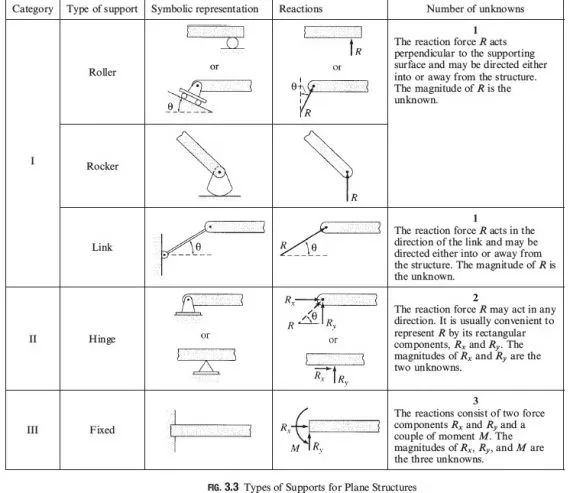Supports are used to attach structures to the ground or other bodies, thereby restricting their movements under the action of applied loads. The loads tend to move the structures; but supports prevent the movements by exerting opposing forces, or reactions, to neutralize the e¤ects of loads, thereby keeping the structures in equilibrium. The type of reaction a support exerts on a structure depends on the type of supporting device used and the type of movement it prevents. A support that prevents translation of the structure in a particular direction exerts a reaction force on the structure in that direction. Similarly, a support that prevents rotation of the structure about a particular axis exerts a reaction couple on the structure about that axis.
The types of supports commonly used for plane structures are depicted in Fig. 3.3. These supports are grouped into three categories, depending on the number of reactions (1, 2, or 3) they exert on the structures. The figure also gives the types of reactions that these supports exert, as well as the number of unknowns that the various supports introduce in the analysis. Figures 3.4 through 3.6 illustrate roller, rocker, and hinged supports.



